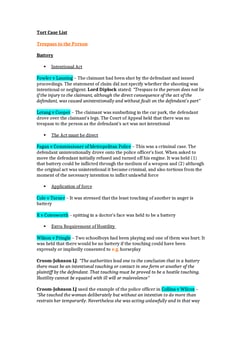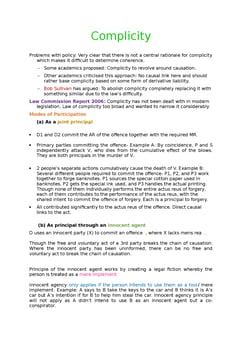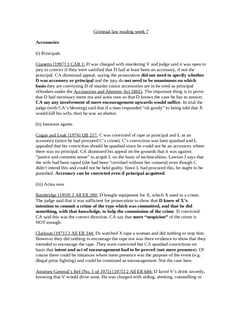R v Chan-Fook [1994] 1 WLR 689
Judgement for the case R v Chan-Fook
Table Of Contents
KEY POINTS
In the legal discourse, there is a pivotal focus on the intricate concept of "actual bodily harm." The debate delves into psychiatric injury should be considered as falling within the ambit of actual bodily harm or not. Similarly, it grapples with the issue of emotional states such as extreme fear or panic can qualify as constituting actual bodily harm or should be treated differently.
The core issue at hand is the determination of the most appropriate jury instruction when it comes to assessing psychiatric injury amounts to actual bodily harm, all under the purview of the relevant legal framework, namely, the Offences against the Person Act 1861, section 47.
FACTS
On his fiancée's suspicion, the appellant confronted a foreign student lodging with their family over a missing engagement ring without any supporting evidence. Failing to explain the ring's disappearance, the complainant was forcibly confined by the appellant on the second floor, leading to an attempted escape through a window that resulted in injuries.
The appellant was charged with assault occasioning actual bodily harm under the Offences against the Person Act 1861.
During the trial, the Crown contended that, even without physical injuries, the complainant's reduced mental state amounted to actual bodily harm. There was no medical evidence supporting this claim, relying solely on the complainant's feelings of abuse, humiliation, and fear.
The judge's direction to the jury regarding the potential for a hysterical or nervous condition to constitute actual bodily harm led to the appellant's conviction, prompting his appeal based on misdirection.
JUDGEMENT
The term 'actual bodily harm' under section 47 of the 1861 Act could encompass psychiatric injury but did not cover mere emotions or states of mind lacking clinical evidence.
The use of 'state of mind' in jury instructions on psychiatric injury should be avoided to prevent confusion. Strong emotions like fear or panic did not constitute actual bodily harm.
An assault causing a hysterical or nervous condition should not automatically be considered an assault occasioning actual bodily harm. If there was evidence of psychiatric injury, the jury could consider it as potential actual bodily harm, but there should be no reference to the complainant's mental state unless relevant.
In cases with disputed claims of psychiatric injury, the Crown should provide expert evidence. Without it, the jury should not decide whether the psychiatric injury resulted from the assault.
The flawed jury instruction lacked evidence to support the claim of psychiatric injury, leading to the appeal's success and the conviction's overturning.
COMMENTARY
This case revolves around a dispute regarding assault causing actual bodily harm, delving into the legal definition of such harm. Whether psychiatric injury can qualify as actual bodily harm, and whether emotions like extreme fear or panic fall under this category.
The case highlights the need for precise jury instructions when dealing with psychiatric injury as actual bodily harm. Reference is made to the Offences against the Person Act 1861.
During the trial, the Crown argued that even without physical injuries, the student's mental distress constituted actual bodily harm, although it lacked medical evidence. The appeal challenged the jury's instruction, asserting that a hysterical or nervous condition could amount to actual bodily harm. The appeal succeeded based on the interpretation of 'actual bodily harm,' clarifying that it can include psychiatric injury but not mere emotional distress.
This case underscores the importance of legal precision, clear instructions, and the necessity of expert evidence when dealing with claims of psychiatric injury in cases of actual bodily harm. The appeal was granted, resulting in the appellant's conviction being overturned.
ORIGINAL ANALYSIS
A man was locked in a room upstairs in a house after aggressive interrogation by a man about a stolen wedding ring. Through fear he jumped out of the window and injured himself.
One of the points made by the prosecution was that the victim had been reduced to such a panic-stricken state that this psychiatric condition alone constituted actual bodily harm. The judge directed that actions causing a “hysterical and nervous condition” = actual bodily harm. This was despite no evidence by psychologists, doctors etc.
-
The CA allowed the appeal and said that though a psychological illness could = actual bodily harm, this should not be left to the jury and the victim’s state of mind should not be considered during or immediately after the attack.
(They could have got a conviction on occasioning actual bodily harm if the injuries sustained from jumping out of the window were serious enough, since the action of the complainant was “reasonably foreseeable (Roberts test)” in the situation, while a conviction on common assault could have stood since the defendant caused him to fear violence and was at least reckless in doing so)
RELATED CASES
For Further Study on R v Chan-Fook

A collection of the best GDL notes the director of Oxbridge Notes (an O...
Need instant answers? Our AI exam tutor is here to help.
Ask questions 🙋 Get answers 📔 It's simple 👁️👄👁️
Our AI is educated by the highest scoring students across all subjects and schools. Join hundreds of your peers today.
Get StartedRelated Product Samples
These product samples contain the same concepts we cover in this case.
| Criminal law | Offences Against The Person Notes Real Notes (28 pages) |
| GDL Tort Law | Psychiatric Injury Notes (8 pages) |


 Since 2010, Oxbridge Notes has been a trusted education marketplace, supplying high-quality materials from top achievers at universities like Oxford, Cambridge, LSE, Harvard, and Yale.
Since 2010, Oxbridge Notes has been a trusted education marketplace, supplying high-quality materials from top achievers at universities like Oxford, Cambridge, LSE, Harvard, and Yale.